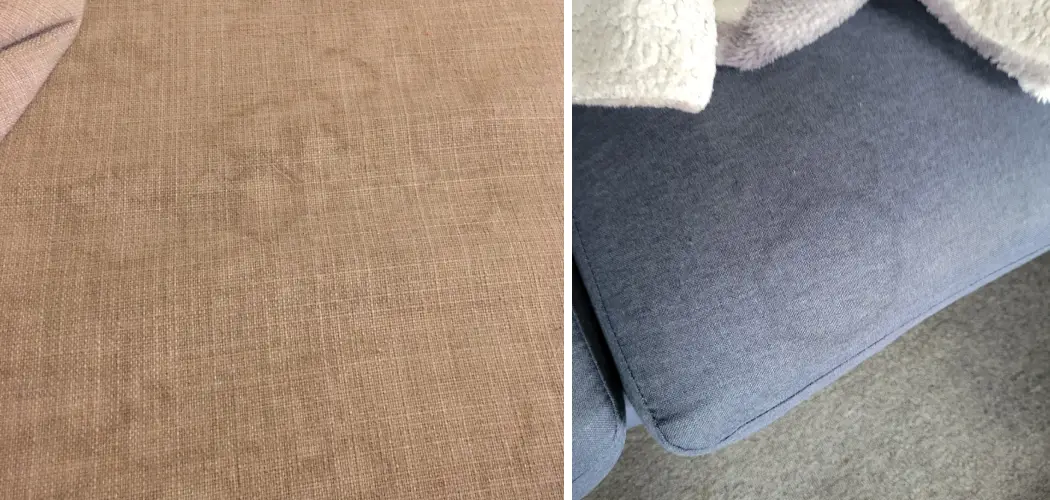Dealing with water stains on a fabric sofa can be a daunting task, especially when they’ve had time to set in and become more pronounced over time. These stains not only take away from the aesthetic appeal of your furniture but can also be a source of frustration when regular cleaning methods fail. However, understanding the right techniques and products to use can make all the difference.
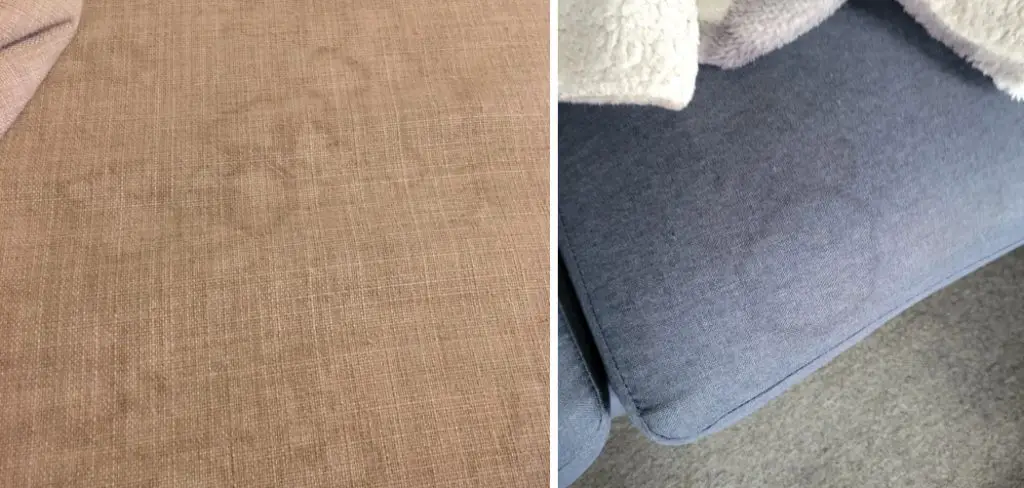
This guide on how to remove old water stains from fabric sofa aims to provide you with step-by-step instructions on how to effectively remove old water stains, ensuring your sofa looks fresh and inviting once again. Whether you’re dealing with a minor blemish or an extensive stain, these tips will help you tackle the issue with confidence.
Why Do Water Stains Set in on Fabric Sofas?
Before diving into the methods for removing old water stains, it’s essential to understand why they may set in on your fabric sofa. When water comes into contact with fabric, it can seep into the fibers and create a mark or ring. If not addressed immediately, these stains can set in over time due to exposure to air and other environmental factors.
Additionally, if you’ve attempted to clean the stain using improper techniques or products, you may have unintentionally caused it to become more pronounced. This is because some cleaning solutions contain chemicals that can react negatively with certain fabrics and cause discoloration or damage.
Therefore, when dealing with old water stains on your fabric sofa, it’s essential to take a gentle approach and avoid using harsh chemicals or scrubbing vigorously.
Needed Materials
To effectively remove old water stains from your fabric sofa, you will need the following materials:
Clean White Cloth or Sponge:
Using a clean white cloth or sponge is crucial as it will prevent any color transfer onto your sofa and allow you to see the progress of stain removal clearly.
Warm Water:
Warm water is essential for loosening up the stain particles and making them easier to remove.
White Vinegar:

White vinegar is an excellent natural cleaning agent that can help break down stains without damaging the fabric.
Baking Soda:
Baking soda has absorbent properties that can help lift away stubborn stains and odors from fabric sofas.
Soft-Bristled Brush:
A soft-bristled brush can be used to gently scrub the stained area, allowing the cleaning solution to penetrate deeper into the fibers.
8 Step-by-step Guides on How to Remove Old Water Stains From Fabric Sofa
Step 1: Blot the Stain Immediately
Start by gently blotting the stained area with a clean white cloth or sponge. It’s important to avoid rubbing the stain, as this can push it deeper into the fibers and make it harder to remove. The goal is to absorb as much of the water as possible before it settles further into the fabric.
Use a light dabbing motion, and make sure to replace the cloth or sponge once it becomes saturated, ensuring you’re not reintroducing moisture back into the fabric. Taking this initial step promptly will make the stain removal process more effective in the subsequent stages.
Step 2: Mix Warm Water and White Vinegar
Prepare a cleaning solution by mixing equal parts warm water and white vinegar in a bowl or a spray bottle. This mixture combines the stain-lifting properties of warm water with the natural cleaning power of white vinegar, which can help break down the stain without harming the fabric. If using a spray bottle, shake it gently to ensure the solution is well-mixed.
This step is crucial as a well-balanced solution will tackle the stain while preserving the fabric’s integrity. Once mixed, you’re ready to apply the solution to the stained area, moving carefully to avoid saturating it too much.
Step 3: Apply the Cleaning Solution
Using a clean white cloth or sponge, gently apply the prepared warm water and white vinegar solution to the stained area. It’s crucial to blot the stain lightly rather than scrubbing it, as this will help lift the stain without embedding it further into the fibers.
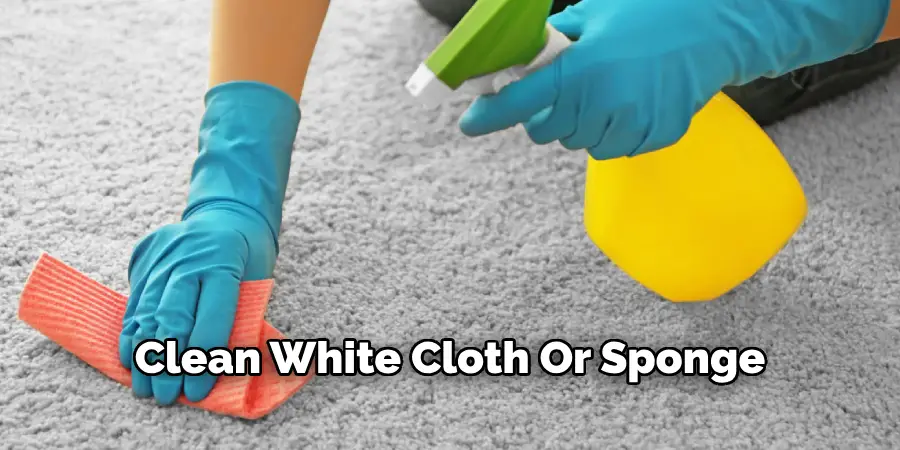
Carefully dab the cleaning solution over the entire affected area until it’s thoroughly covered, ensuring you don’t oversaturate the fabric. Allow the cleaning solution to sit on the stain for a few minutes, giving it time to break down the particles causing the discoloration. This careful application will help penetrate the fabric while minimizing the risk of additional damage or spreading the stain.
Step 4: Blot the Area Again
After letting the cleaning solution sit for a few minutes, take a clean white cloth or sponge and gently blot the area again. This step helps to absorb any remaining moisture and lift away loosened stain particles. You may notice some improvement in the appearance of the stain after this step, but don’t be discouraged if it’s still visible.
You’ll continue to build on this process in the following steps, so it’s essential to be patient and thorough with each step.
Step 5: Create a Paste with Baking Soda
For more stubborn stains, create a paste by mixing baking soda with water until it forms a thick consistency. The abrasive properties of baking soda can help lift away deep-seated stains while also neutralizing any odors that may have developed over time.
To create the paste, mix one tablespoon of baking soda with enough water to form a thick paste. Apply the paste directly to the stained area, making sure to cover it entirely. Allow the paste to sit on the stain for about 15 minutes before proceeding to the next step.
Step 6: Gently Scrub with a Soft-Bristled Brush
Using a soft-bristled brush, gently scrub the stained area in circular motions. This gentle agitation will help work the cleaning solution and baking soda into the fibers while lifting away any remaining stains and odors. Make sure not to apply too much pressure or scrub too hard, as this can damage delicate fabrics.
Continue scrubbing until you notice the stain starting to fade and the paste becoming discolored. This is a good sign that the cleaning solution and baking soda are working together to lift away the stubborn water stains.
Step 7: Blot with Warm Water
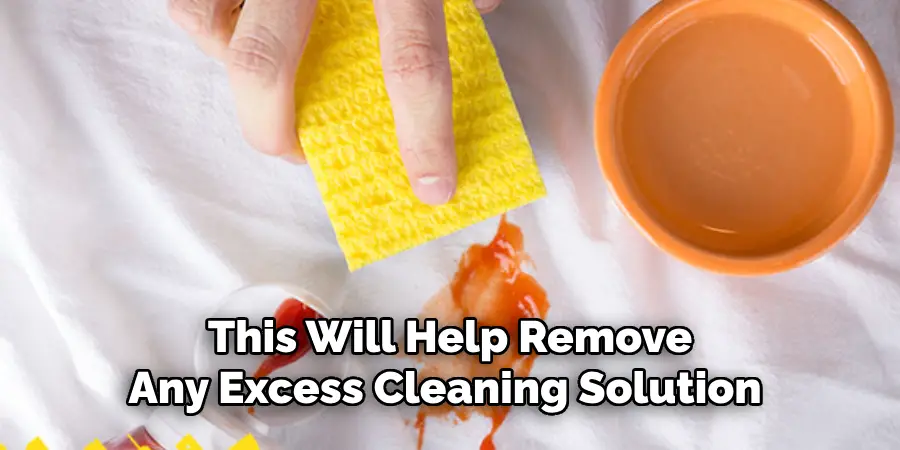
After thoroughly scrubbing, use a clean white cloth or sponge dampened with warm water to blot the area. This will help remove any excess cleaning solution or baking soda residue, as well as any remaining stain particles.
Make sure to blot gently and avoid rubbing, which can spread the stain or cause damage to the fabric. Continue blotting until you no longer see any discoloration on your cloth or sponge.
Step 8: Let the Sofa Air Dry
The final step is to allow your sofa to air dry completely. Avoid using a hairdryer or applying direct heat, as this can cause shrinkage or damage to the fabric.
You may notice that some stains have completely disappeared at this point, while others may still be slightly visible. If you’re not entirely satisfied with the results, you can repeat these steps until the stain is no longer noticeable.
Following these steps on how to remove old water stains from fabric sofa will help you remove old water stains from your fabric sofa without causing any damage. Remember to always test any cleaning solution on a small, inconspicuous area of the sofa first and to be patient with the process. With a little time and effort, your sofa can look as good as new!
Additional Tips and Tricks
- For delicate fabrics, such as silk or velvet, it’s always best to consult a professional cleaning service to remove old water stains.
- It’s crucial to act quickly when dealing with water stains on fabric sofas. The longer the stains sit, the more challenging they become to remove.
- To prevent water stains from occurring in the future, consider investing in a fabric protector spray or cover for your sofa.
- Regularly vacuum and spot-clean your fabric sofa to maintain its appearance and prolong its lifespan. By following these tips and tricks, you can keep your fabric sofa looking clean and fresh for years to come.
Frequently Asked Questions
Q: Can I Use Other Types of Vinegar, Such as Apple Cider or Balsamic Vinegar, Instead of White Vinegar?
A: White vinegar is the most recommended type for cleaning purposes due to its high acidity level and mild scent. You can try using other types of vinegar in a pinch, but they may not be as effective.
Q: Can I Use Bleach to Remove Water Stains?
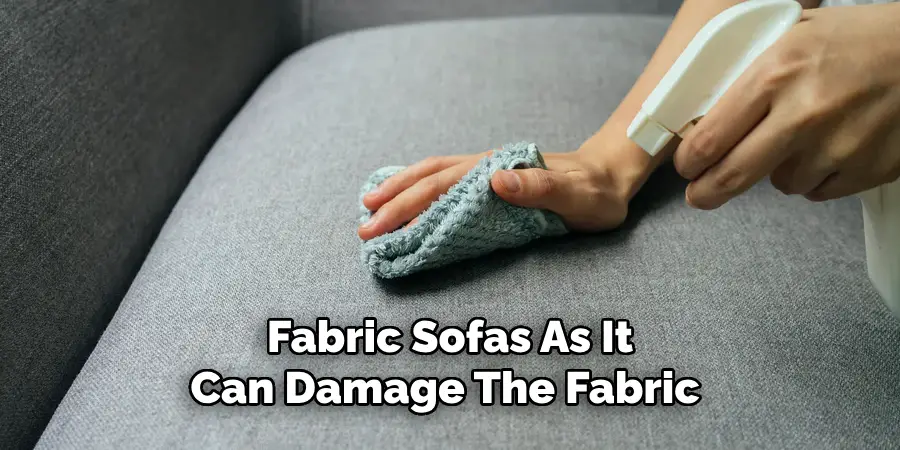
A: It’s not recommended to use bleach on fabric sofas as it can damage the fabric and cause discoloration. Stick with gentler cleaning solutions, such as the ones mentioned in this guide.
Q: How Do I Know if My Sofa is Safe for Cleaning Solutions?
A: Always check the manufacturer’s label or instructions before using any cleaning solution on your sofa. If unsure, test the solution on a small, inconspicuous area first and wait for a few minutes to make sure there are no adverse effects.
Conclusion
Cleaning water stains from a fabric sofa may seem daunting, but with the right approach and a little patience, it is often possible to restore your furniture to its former glory. By following the detailed steps on how to remove old water stains from fabric sofa outlined above, you can tackle even the most stubborn stains without damaging the fabric. Remember the importance of blotting instead of scrubbing, using natural cleaning agents, and allowing your sofa to air dry.
Prevention is also key—consider using protective covers and regular maintenance to keep your sofa looking fresh. By incorporating these practices into your cleaning routine, you ensure that your fabric sofa remains an inviting and pristine centerpiece in your living space.
you can also check it out Clean Secret Lab Chair Fabric

